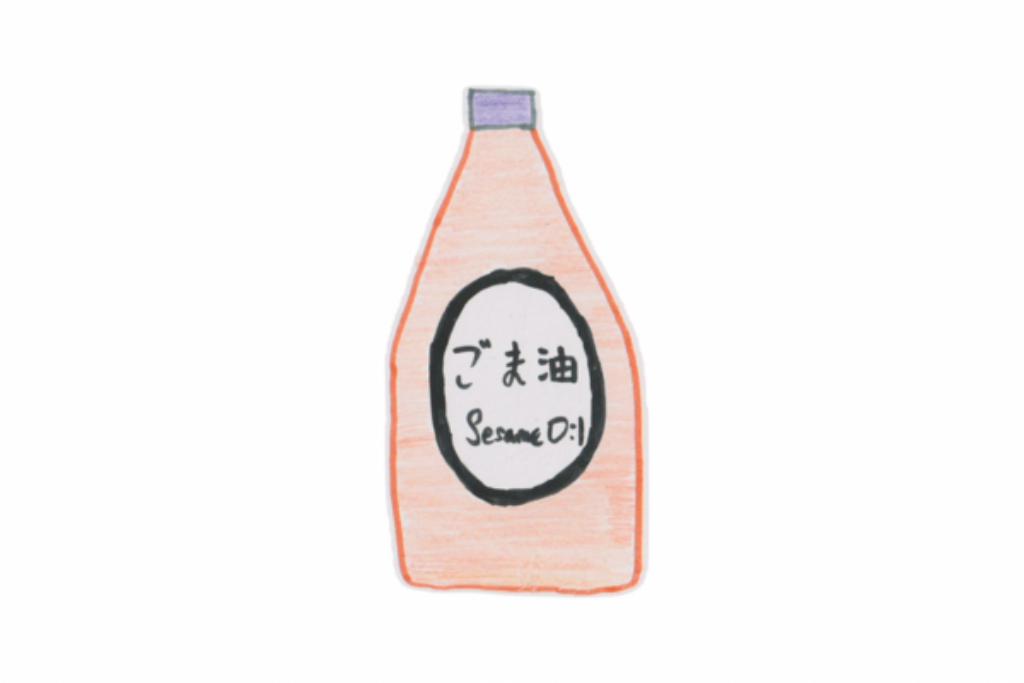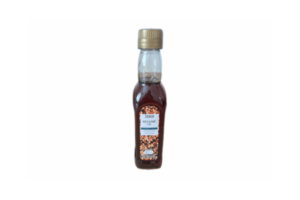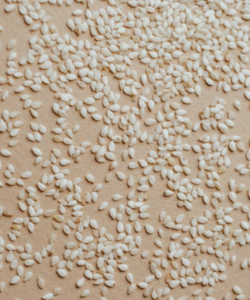In the world of health-conscious and delicious vegetarian cuisine, sesame oil shines bright with its rich nutritional value and unique flavour, standing out among many ingredients as an indispensable item in the kitchen.

Nutritional value of sesame oil
Sesame, especially when turned into sesame oil, is a highly nutritious ingredient. It is rich in monounsaturated and polyunsaturated fatty acids, helping to protect the heart and prevent cardiovascular diseases. Additionally, the abundant vitamin E in sesame oil has antioxidant properties, effectively eliminating free radicals in the body, delaying aging, and keeping the skin soft and elastic. However, for those allergic to nuts, sesame oil might trigger allergic reactions and should be consumed with caution.

Types and selection of sesame oil
Sesame oil is divided into two types based on the raw materials used – light sesame oil and dark sesame oil. Light sesame oil, made from white sesame seeds, has a pale colour and a mild flavour, suitable for dressing or seasoning. Dark sesame oil, made from black sesame seeds, has a deep colour and a rich flavour, more suitable for stewing or nourishing dishes.

Five cooking tips with sesame oil
- Timing matters – The best time to add sesame oil is in the final stages of cooking to avoid high temperatures destroying its nutrients and aroma.
- Avoid direct high heat – Sesame oil should not be heated directly at high temperatures. It is recommended to use it at low temperatures or add it directly to dishes that have been cooked.
- Gentle and slow – If heating is necessary, it should be done on low heat after the dish is cooked, and then sesame oil can be added to simmer gently, maintaining its flavour.
- The cooking technique of “three cup dishes” – When making traditionally Taiwanese three-cup dishes, you should firstly stir-fry ginger slices in sesame oil, and then add the main ingredients and other seasonings. This enhances the penetration of sesame oil’s aroma into the dish. In short, when cooking with sesame oil, heating it with ginger in a cold pan maximises the release of its aroma and prevents bitterness from high temperatures. Back to original, what is “three cup dishes”? Three-cup dishes refer to a traditional cooking method that uses sesame oil, soy sauce, and rice wine as the three main seasonings. The name “three-cup” comes from the use of these ingredients in equal proportions, typically one cup of each, to cook dishes. This technique is very famous in Taiwan for infusing rich flavours into the ingredients, creating a savoury and aromatic meal.
- Add just before serving – You should add sesame oil to the dish after cooking and turning off the heat.
Sesame oil is not just a nutritionally rich seasoning but also a secret weapon that can elevate the level and taste of dishes. By following the above cooking tips, you can easily integrate this into daily cooking, bringing healthy and delicious dishes to your family. Sesame oil is a very good food ingredient in the plant-based cuisine because the golden drops of sesame oil is good for the health of eaters and the deliciousness of the dishes.






